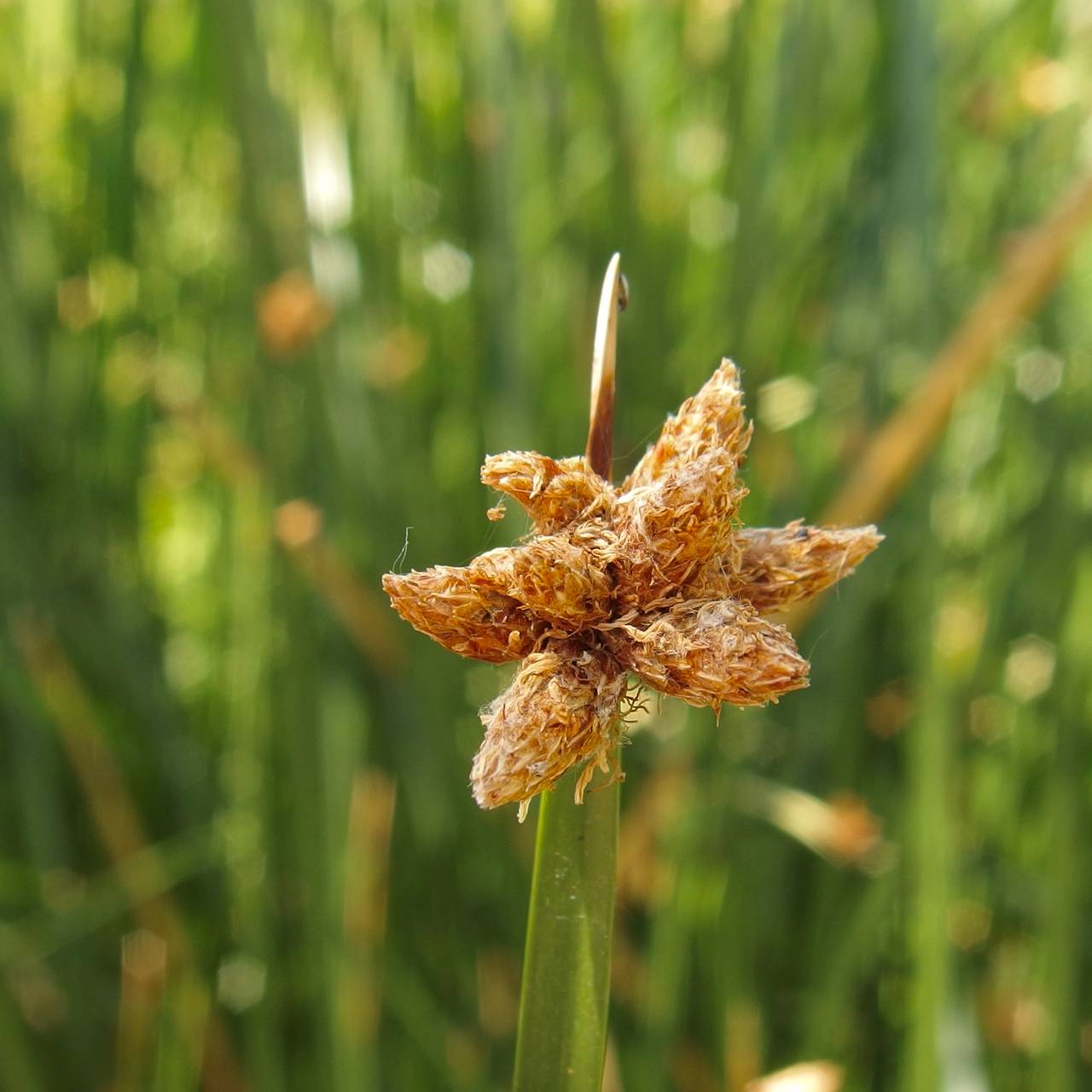Schoenoplectus
|
Family: Cyperaceae |
Herbs, perennial or annual, cespitose or not, rhizomatous or not. Culms solitary or not, cylindric to strongly trigonous, smooth, glabrous, spongy with internal air cavities. Leaves basal, rarely 1(-2) cauline; sheaths tubular; ligules membranous, glabrous; blades well developed to rudimentary, cross section dorsiventrally flat to C-shaped or laterally compressed, soft, smooth or margins sometimes distally scabrous or spinulose. Inflorescences terminal, capitate to openly paniculate; spikelets 1-100+; involucral bracts 1-5, leaflike, proximal bract erect to spreading. Spikelets terete, 3-25 × 2-5 mm; scales deciduous, 8+, spirally arranged, each subtending flower, or proximal scale empty (sometimes called a bracteole), floral scales with apex entire or 2-fid, midrib usually prolonged into mucro or awn, smooth or abaxial surface scabrous, margins ciliate. Flowers bisexual (basal flowers pistillate in amphicarpic species); perianth of 0-6(-8) bristles, straight or curved, spinulose, straplike, sometimes fringed with soft, blunt hairs, shorter than to somewhat exceeding achene; stamens 3; anthers 3 mm; styles linear, 2-3-fid, base not or scarcely enlarged, deciduous in fruit. Achenes biconvex to trigonous, with apical beak, faintly to prominently rugose or with transverse wavy ridges, 2.5-3.5 mm including 0.1-2 mm beak. The species of 7d. Schoenoplectus sect. Supini produce two morphologically different types of achenes. They have solitary, pistillate (amphicarpic) flowers enclosed in basal leaf sheaths in addition to the terminal inflorescences on the culms. In amphicarpic flowers perianth bristles are usually absent, when present, 1-2, caducous, and sparsely spinulose; the styles are (2-)3-fid, greatly elongated, stigmas are exserted from sheath orifices; achenes are larger than those found in normal spikelets, and their shape and surface sculpturing are different (A. E. Schuyler 1969; J. Raynal 1976; J. Browning 1992). Schoenoplectus includes some difficult species complexes, each with different ranges outside of North America, that are discussed under the first species in each complex. The four sections recognized here were delineated by S. G. Smith and E. Hayasaka (2001). About ten species from eastern Asia and Africa have not yet been assigned to a section. Schoenoplectus californicus and members of the S. lacustris and S. pungens complexes are often ecologically dominant in wetlands, where they provide valuable food and habitat for waterfowl and other animals. In North America their culms are used, mostly historically, for making mats, baskets, chair seats, houses, boats, and other objects. Some species are cultivated as ornamentals. Indicator boxes for weediness are marked here on the basis of the status listed under Scripus. Users of this treatment should note the following features: colors of unripe achenes, even when they appear to be mature, are usually much paler than ripe achenes; lengths of achenes include beak; lengths of scales include awn; spikelets usually elongate during flowering; and culm thicknesses refer to the middle third of culm.
|

